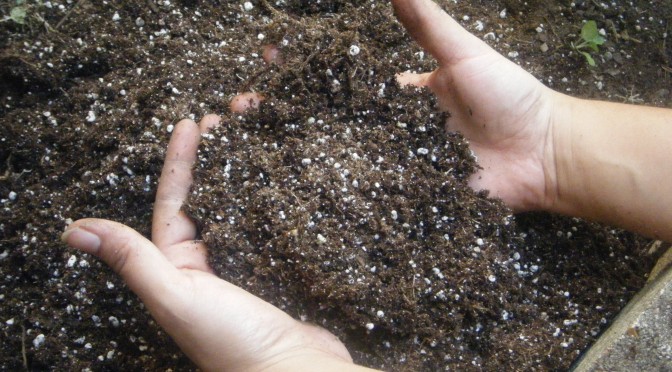Soil covers only 10% of the earth’s surface, but within this small area, all of the world’s crops are produced. It provides the anchor that allows plants to grow upright and is the primary source of water and nutrients for plants. Scientists have identified over 70,000 varieties of soil in the United States alone. Five tons of soil spread over an acre of land is only as thick as a dime.
What is Soil
Soil is composed of 25% air, 25% water, 45% minerals, and 5% organic matter by volume. Although the mineral content of soil is 45% by volume, it represents 99% of soil’s weight. The 50% of soil that is comprised of air and water is called the pore space. Although the pore space remains constant, the actual amount of air or water that fills the pore space varies. Think of a jar filled with marbles. The area between the marbles is the pore space. If it has just rained, the pore space contains more water. If it has not rained, or if the water has drained out or evaporated, the pore space contains more air.
A good rule of thumb in gardening is to never work your soil when it is sticky wet. Doing so compresses the pore space and makes it more difficult for air to re-enter the soil.
Soil Texture
The texture of soil plays an important role in soil’s ability to absorb and hold water, and in turn, its ability to make water and nutrients available for plants growing in it. Soil is classified according to its texture as being sand, silt, or clay. Sand is highly permeable, has low water retention, and has particles that are irregular in shape and between 2.0 and .05 mm in size. Silt has particles that are between .05 and .002 mm in size. Clay is composed of flat particles that are less than .002 mm in size, is slow to absorb water, but has high water retention.
Organic Matter
Although comprising only 5% by volume, organic matter plays a key role in the structural characteristics of soil. When organic matter decomposes, nutrients are released back into the soil and made available for plants. Organic matter added to sandy soil will help in slowing the drainage of water. When added to clay soil, organic matter will help speed the drainage of water and allow a more beneficial amount of air to enter the soil. Composting is a great way to provide your own perpetual supply of organic matter to add to your soil.
Nutritional Elements
The primary nutritional elements that plants derive from soil are nitrogen, phosphorous, and potassium. When you buy a bag of any type fertilizer, it will have three numbers listed next to each other (ex. 20–10–5). The first number is the percentage by weight of nitrogen in the fertilizer. The second number is the percentage by weight of phosphate, and the third number is the percentage by weight of potash, or potassium, in the fertilizer.
Secondary nutritional elements plants need to derive from soil are calcium, magnesium, and sulfur. Nutritional elements needed by plants in only very small quantities, micronutrients, are zinc and magnese.
Soil Testing
Rather than just buying a random bag of lawn or garden fertilizer because you saw it on TV, make it a habit to get your soil tested by your local cooperative extension agency every one to three years. Check out our complete state by state listing of cooperative extension web sites.
Be sure to take separate samples from each different area of your yard such as the front lawn, the garden, and a landscape bed. For a given area to be sampled, use a clean shovel to take a 6 inch deep sample of soil from 10 to 15 random spots in that area. Place these samples together in a clean plastic bucket and mix. A metal bucket may leave trace elements in the sample. Now place 2 pints of the mixed sample soil in a plastic bag for analysis. Clean the shovel and bucket then repeat this process for the next area to be sampled.
Conclusion
By better understanding the current structure and nutritional content of soil in specific areas of your yard or garden, you will be able to apply the proper type and amount of soil amendments needed to help give your plants their best chance to thrive and produce.


